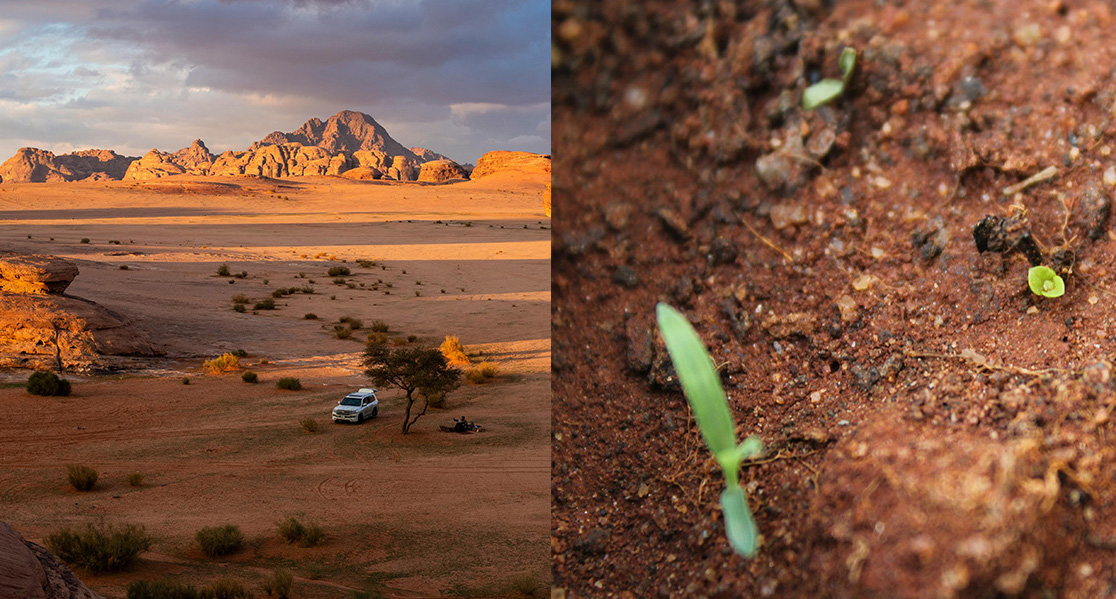
Saudi Arabia is rethinking how to confront desertification, one of the most pressing ecological challenges of our time. In recent months, the National Center for Vegetation Cover Development and Combating Desertification has launched twin initiatives: collecting native seeds on a large scale and scattering them across rangelands and deserts to restore ecosystems.
Since the start of 2025, the centre has collected more than 80 tonnes of seeds, prioritising plants native to the Kingdom’s naturally arid landscapes. These include species such as Ziziphus spina-christi, Rhanterium epapposum (known locally as Arfaj), and Vachellia tortilis (umbrella thorn acacia). All are plants that can flourish in harsh desert conditions. Native seeds are valuable for rehabilitation because they are adapted to local soils, rainfall, and temperature extremes, giving them a much higher chance of success than imported species.
In parallel, a new programme is scattering seeds across 33 sites in regions including Riyadh, Madinah, Makkah, Qassim, and the Eastern Province. The initiative focuses on hardy native plants such as ghada (haloxylon persicum) and Najdi acacia (Vachellia gerrardii var. najdensis), which help stabilise soil, improve fertility, and provide essential fodder for wildlife. Using modern seeding machinery, the centre is scattering seeds suited to the local ecosystem onto degraded lands – a proven method to accelerate vegetation recovery.
The ecological case is clear. Expanding vegetation cover reduces soil erosion, improves rangeland productivity, cools overheated landscapes, and captures atmospheric carbon. But the strategic importance lies deeper: in building long-term resilience to climate extremes, reducing dependency on imported food and fodder, and securing the ecological base on which any form of sustainable development depends.
The efforts also align with the Saudi Green Initiative, which aims to plant 10 billion trees nationwide, and with the United Nations Sustainable Development Goals on land restoration and climate adaptation. Yet they also need to be understood as part of a larger cultural and infrastructural transformation under Vision 2030. Alongside over USD 21.6 billion invested in cultural projects, the Kingdom is acknowledging that sustainable development is not a binary choice between ecology and urbanisation. Both must advance together, with restoration as the foundation of cultural and social renewal.
The scale of action is significant. Saudi Arabia’s deserts, which cover most of the country, are vulnerable to overgrazing, sand encroachment, and rising temperatures. By banking native seeds and returning them to the land, the centre is not only building long-term ecological resilience but also reframing how restoration is understood – from one-off interventions to preventive strategies that draw on the genetic resilience of native species. This shift also moves beyond isolated planting to a systemic approach, where the functions of vegetation – cooling overheated ground, enriching soil, capturing carbon – are recognised as vital infrastructure for cities and communities.
These programmes may provide a blueprint for restoring degraded land in some of the world’s harshest environments. More than re-greening deserts, seed-based rehabilitation reframes how ecological systems, urban development, and social wellbeing are planned in the 21st century – not as competing agendas, but as parts of a single living system.
Seeds of Renewal: Desert Restoration in Saudi Arabia
In hyper-arid environments, resilience begins at the smallest scale – the seed. Saudi Arabia’s new seed-based restoration programmes signal a shift from reactive land management to proactive ecological renewal. They also offer lessons for how urban development, cultural investment, and ecological systems must grow together if sustainable cities are to take root.